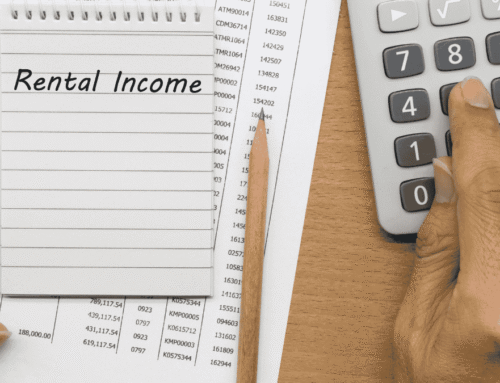Canadian Investors Guide to Buying U.S. Rental Properties
Why This Guide for Canadians?
I’ve bought 120+ U.S. rental doors as a non-U.S. investor, and over the last few years I’ve helped dozens of Canadians do the same. I also speak to at least 2 or 3 Canadians every week who have already purchased rental property in the U.S., and are now experiencing the same specific challenges. The biggest hurdles I see are always the same: buying the wrong type of property in the wrong market (hint: cheap doesn’t mean good), getting financing (purchase and/or cash out refinancing), how to structure their investment to avoid double taxation, and how to manage the process and management remotely.
This guide distills what has actually worked for me and my clients: how to structure your purchase (what type of U.S. entity to use), what properties to target (market and price point), how to finance your investment, what to expect on U.S. taxes as a Canadian, and a step-by-step path from offer to closing. I’ll keep it plain-English and practical, with links to tools and checklists so you can invest safely and with confidence.
JOIN MY VIP PRIORITY INVESTOR LIST
Get the Best DSCR Loan Deals and Off-Market DSCR-Ready Investment Properties in Your Inbox Every WeekYES! ADD ME TO THE PRIORITY INVESTOR LIST
Can Canadians Buy U.S. Property?
Yes. Canadians can buy and own U.S. real estate without a special visa. You can purchase in your personal name or via a corporate entity (often an LLC/LLP combination in the case of Canadians), and all investment purchases close through a title/escrow company just like domestic deals.
- What you can buy: Single-family homes, condos/townhomes, 2–4 units, small multis (5+), and qualifying short-term rentals (where local rules allow). You can also buy commercial property and most types of land, but I don’t personally deal in those types of property, so I’m not the best-placed to advise you.
- How you’ll close: Remote closing is common for most Canadians (although you can visit to sign at closing if you wish). There are few hoops to jump through, like; KYC documents for lending, notarized closing docs (e-notary or buyer representative), and wiring funds through your international FX provider.
- Financing path: Foreign National / DSCR / ITIN options are available for Canadian buyers; U.S. W-2 income isn’t required for Foreign National DSCR loans. There are also cash out refinance options, but terms aren’t as flexible for non-residents, so you should bear that in mind if you intend to use a BRRRR investment strategy.
Heads-up: Non-residents are taxed on U.S. rental income and may face FIRPTA withholding on sale. Structure and elections matter—see U.S. Taxes for Non-Residents and How to Structure Your U.S. Property Investment.
Financing Options for Canadians: Foreign National vs DSCR vs ITIN
Quick answer: If it’s a fixer-upper, most Canadian investors I work with use cash or private/hard money to purchase/renovate, then refinance into a DSCR loan for long-term hold. But if you’re buying a turnkey rental property, a DSCR loan is usually the best fit. If you already have an Individual Taxpayer Identification Number (ITIN) and a U.S. credit score, you might find better value with an ITIN loan.
- DSCR (investment property): Ideal for Canadians buying rentals in the U.S. DSCR lenders underwrite the property’s income rather than your personal income, and you don’t need a U.S. credit score to qualify. I use DSCR loans to purchase and/or refinance all of my own U.S. rentals. Learn more in my DSCR Loan Guide and see current ranges in the DSCR Loan Rates guide.
- Foreign National (full-doc): This is closer to a conventional mortgage. The lender uses personal income and foreign credit/assets to underwrite. Foreign national mortgage rates tend to be a little more competitive than DSCR. Good if you’re buying a second home/vacation home or you have strong income and credit in Canada.
- ITIN: For Canadians who file a U.S. return with an ITIN. Programs can offer better rates/terms than non-resident options, but you’ll typically need a decent U.S. FICO score.
Common Misconceptions (quick reality check)
- DSCR ≠ personal credit: Your Canadian credit score isn’t used for DSCR approval; an ITIN is not required for DSCR.
- Max LTV: Expect ~70% as a foreign national. With an ITIN and solid U.S. credit, some programs allow higher.
- Rate premium: Non-resident programs usually price ~0.25%–1.00% above mainstream U.S. mortgage headlines.
- Minimum loan size: For competitive pricing, aim for ≥$100k. Smaller loans exist but pricing/fees are often not as attractive.
- Pre-approval is quick: You can get a DSCR pre-approval with basic property details (price, taxes, rents, insurance, HOA)—no full doc application is needed at that stage.
- Cash-out seasoning: Many lenders require 6–12 months on title and cap LTV lower for cash-out. Plan your BRRRR timeline and hold financing accordingly.
Note: Terms vary by lender, state, and property type (STR/condo/5+). Always confirm overlays before you go under contract.
What to do next: Compare programs side-by-side in the table below, then price scenarios with my DSCR calculators. If you need to pull equity from a U.S. property, see the DSCR Cash-Out Refinance Guide.
Foreign National vs DSCR vs ITIN — Side-by-Side Comparison
Use this quick comparison to choose the best path based on your goals, documentation, and target LTV. Then price scenarios in my DSCR calculators and check today’s DSCR rates.
Takeaway: If you’re buying a turnkey rental, DSCR (Foreign National) is usually simplest option; if you already have a U.S. tax footprint, an ITIN loan can price better; if it’s a second home with strong salary/credit, full-doc Foreign National may win on rate.
Banking & FX: Moving Money to the U.S. From Canada
Short answer: Set up a U.S. bank account early, know your wire path, be aware of timelines, and control FX costs. All Canadians will need a U.S. bank account (personal or entity). A specialist FX provider usually offers better exchange rates, lower fees, and faster wires than retail banks.
- Accounts you’ll need: A U.S. bank account in your name or your U.S. entity’s name (requires an EIN). You’ll use this to show proof of funds for down payment, closing costs, and reserves. Many closings accept wires from reputable FX providers to title/escrow—always confirm instructions by phone with escrow before sending.
- Documents (typical): Passport, second ID, proof of address, U.S. entity Articles/Operating Agreement (if LLC), EIN letter, KYC questionnaire. Several banks and fintechs support foreign-owned U.S. LLC accounts. If you’d like help setting up structure and banking, you can schedule a call.
- Wire path: CAD → FX provider (convert to USD) → U.S. bank or directly to title/escrow. If you’re using a mortgage, fund your U.S. account as soon as possible to meet any seasoning requirements set by the lender. Verify payee name, ABA routing, account number, and reference with escrow by phone before wiring.
- FX basics: Retail banks often add a wide spread (hidden cost). Specialists quote tighter spreads and let you lock rates (limit/forward orders) for certainty near closing. Expect wire fees at one or both ends; be ready to send a small top-up if needed.
| Step | What to Expect | Tips |
|---|---|---|
| CAD→USD conversion | Spread over mid-market (often 0.3%–1.5%+). | Compare providers; ask for the spread, not just “no fee”. |
| Wire fees | $0–$40 per wire, depending on bank/provider. | Batch funds; avoid multiple small wires. |
| Timing | Same day to 2 business days typical. | Send 2 days before the closing cut-off; confirm receipt with escrow. |
| Compliance | Source-of-funds/beneficiary checks (KYC/AML). | Keep 90–120 days of statements and invoice trails ready. |
FX impact example: Converting CAD 400,000 at a 1.3400 mid-market vs 1.3250 (≈1.12% spread) changes your USD by ≈ $4,500. Lock your rate once you sign the purchase contract.
- Hedging light: If closing is 2–4 weeks out, consider a forward with your FX provider (fix today’s rate for a future date). Use only what you need; some forwards require margin.
- Proof of funds: Escrow and lenders may ask for statement history and wire confirmations. Save PDFs as you go to avoid delays in underwriting.
Note: Policies differ by title company, lender, and state. Always confirm payee details directly with escrow before wiring funds.
Step-by-Step Timeline: Offer → Close (for Canadians)
Plan on ~21–45 days for a financed purchase (cash can close faster). Here’s the simple path I use with my Canadian clients:
- Entity & banking (in advance): If you’re using a U.S. entity, get your EIN ahead of time and open your U.S. bank account. Move CAD→USD to season funds if the lender requires it. In my experience, it pays to get this done before you even go shopping for real estate.
- Pre-approval (Days 0–3): Once you’ve found a target property, get a DSCR or Foreign National loan pre-approval, and gather your KYC documents, proof of funds, and reserves. Once you have terms, underwrite the deal for cash flow.
- Offer & EMD (Days 1–3): If the numbers work, sign the purchase contract and wire your earnest money to escrow (verify wire details by phone).
- Due Diligence (Days 2–5): Title report, appraisal, insurance quotes, and inspection/sewer scope. See my guide on turnkey property due diligence.
- Underwriting (Days 2–20): Submit the loan file and supporting documents to your broker or lender. Be prepared to organize and send any additional documents on request. I highly recommend working with a mortgage broker experienced with foreign nationals. You’ll find that much easier than going directly to a lender in most cases.
- Insurance bind (Days 10–20): Choose a landlord policy; provide the binder to your lender/broker and escrow.
- Final figures (Days 18–28): Review the Closing Disclosure/settlement statement. Arrange the final USD wire (send 1–2 business days before cut-off).
- Sign & close (Days 21–35): Remote e-notary or approved in-person signing; escrow confirms funds received and records title.
- Post-close (Days 30+): File BOI report (if required), set up property management and utilities, archive all statements/wire receipts. Meticulous record-keeping helps minimize potential U.S. tax liability when you file your non-resident return.
Pro Tip: Setting up a U.S. entity (‘right’ structure depends on your personal circumstances and goals) is fast, but the EIN can take weeks. Either do this early or purchase a ready-made entity with EIN and banking. For help setting up your structure, or a referral to our dual qualified U.S./Canadian CPA, schedule a call.
Where to Buy: Markets to Shortlist (for Canadians)
Most of my Canadian clients are looking to the U.S. market as it’s more affordable, and there are better opportunities for growth and cash flow. While that’s certainly true, the U.S. is a big market, and I see a lot of Canadian folks zeroing in on ‘cheap’ investment property. In my own personal experience, that’s quite often a mistake.
Cheap properties often come hand-in-hand with rough neighbourhoods, difficulties in financing, and problematic tenants. I’ve experienced this first hand, so today I focus our own acquisition strategy on markets at a slightly higher price point that are much more likely to perform well over the long-term, and save you a ton of headaches!
What works in practice: Target metros where the rent-to-price ratio is reasonable (0.8 to 0.9), taxes/insurance don’t crush your cash flow, landlord law is predictable, and financing is achievable at today’s rates. Look for quiet, peaceful neighbourhoods in the suburbs within 10 to 30 minutes commute of downtown employment centers. You can of course find good deals in almost any markets, but for me, team is everything, so I stay in my lane and invest in markets where I have an excellent local team on the ground.
Cleveland, OH — Cash-Flow Value with Manageable Overheads
- Why it works: Affordable inventory, historically favorable rent-to-price, large medical/education anchors, resilient renter demand.
- Watch-outs: Block-by-block quality; lead-safe/licensing in some areas; verify tax reassessments; older housing stock = higher maintenance reserves. Higher property taxes in some counties.
- Fit: Single family and small (1 to 4 unit) multifamily with professional property management; DSCR at today’s ranges often pencils if taxes/insurance are validated.
Kansas City, MO — Balanced Yield with Solid Fundamentals
- Why it works: Balanced rent-to-price; diversified employers; inventory that supports DSCR at current rates.
- Watch-outs: County-by-county tax differences; licensing/inspection rules; vet rehab quality (avoid lipstick turns).
- Fit: Investors seeking dependable cash flow and straightforward DSCR financing with professional property management.
How to shortlist: Search our online portal for turnkey property deals, then model fixed vs ARM and interest only financing scenarios in my DSCR calculators.
Final Thoughts: A Simple Path for Canadians Buying U.S. Rental Properties
If you’re investing in the U.S. from Canada, my advice is to keep it simple. Most of my Canadian clients find the best success with C+ to B-class markets, and fully-renovated turnkey rental properties within a $145,000 to $250,000 price range. That opens you up to a better quality neighbourhood, excellent long-term equity accumulation, more consistent cash flow, fewer property management headaches, and the biggest range of good-value financing options.
Your next 5 moves:
- Shortlist markets: I can offer deals in Cleveland, Kansas City, and others.
- Price financing scenarios in the DSCR calculators and check today’s DSCR rates.
- Set up U.S. entity and bank account; plan your CAD→USD FX path.
- Request sample deals + inspection/sewer scope; verify investor taxes/insurance.
- Get a quick DSCR pre-approval using the pre-approval checklist.
Related: Can Foreigners Buy Property in the USA – A Guide for International Buyers
GROW YOUR WEALTH WITH U.S. REAL ESTATE
Start your US real estate investment journey today, and book a Free 1-2-1 Discovery Call with a member of our senior management team.
“Having personally invested in over 120 US rental properties from overseas, I know the true value of getting the right advice and support.
David Garner – Cashflow Rentals

GROW YOUR WEALTH WITH U.S. REAL ESTATE
Start your U.S. real estate investment journey today with high-quality cashflow real estate. Book a Free 1-2-1 Discovery Call with a member of our senior management team to discuss your personalized strategy.
“Having personally invested in over 120 US rental properties from overseas, I know the true value of getting the right advice and support.
David Garner – Cashflow Rentals
Canadian Buyer FAQs
Do Canadians need a U.S. credit score or SSN to get a mortgage?
No SSN is required for Foreign National DSCR loans; lenders underwrite the property’s income (DSCR) and your KYC/OFAC, source of funds, and reserves. If you have an ITIN and U.S. credit history, ITIN loans can price more competitively.
What LTVs are typical for Canadians buying rentals?
For DSCR (Foreign National), purchases often cap around 70–75% LTV; cash-out refi is usually lower (e.g., 65–70%) and may require seasoning. Full-doc foreign national and ITIN programs can reach similar or slightly higher bands depending on profile.
Can I buy U.S. property in a Canadian corporation or a U.S. LLC/LLP?
Yes—many investors use a U.S. LLC or LLP for title and lending simplicity. The “right” structure depends on your tax plan and treaty considerations. Speak with a cross-border CPA before you buy; see my guide on structuring U.S. property.
How long does closing take for a financed purchase?
Plan on ~21–45 days for financed transactions (cash can be much faster). Line up entity + banking early and keep 90–120 days of source-of-funds statements ready to avoid delays.
What taxes should Canadians expect on U.S. rentals?
You’ll file U.S. non-resident taxes on your rental income and then reconcile in Canada. On sale, FIRPTA withholding may apply. Your entity choice and treaty elections matter—see U.S. taxes for international investors.
Are short-term rentals (Airbnb) feasible for non-residents?
Yes in markets that permit STRs, but rules are local and can change. Lenders may require an STR addendum, booking history, or underwrite to market rent via 1007. Always confirm licensing and HOA rules before you go firm.
Can I refinance later to pull out equity?
Yes—DSCR cash-out refi is common once the property is stabilized. Expect lower LTV caps than purchase and possible seasoning. Strong DSCR and clean documentation help maximize proceeds.












